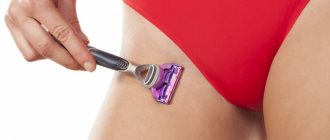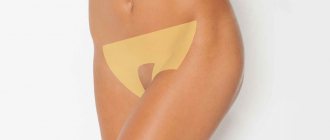Many women who have practical experience in using such a hardware method as electrolysis know that red spots may appear on the surface of the skin after electrolysis. This phenomenon is not accidental, since the procedure involves the use of electric current directed at the hair shaft.
For this reason, swelling and red dots appear after electrolysis. Accordingly, cosmetologists actively recommend proper skin care after removing unwanted hair using hardware.
How to prevent red dark spots after electrolysis
The specialists of the OB clinic provide clients with useful recommendations, following which it is possible to prevent the appearance of marks after electrolysis.
There are some prohibitions that apply to the first days. In particular, traces from electrolysis will not appear if:
- leave the surface of the skin that has undergone electrolysis alone;
- Do not touch the treated surface with dirty hands to avoid inflammation or infection;
- red dots from electrolysis will not appear if the skin is not wet;
- visiting the swimming pool, sauna, bathhouse is prohibited;
- spots after electrolysis may appear if the treated skin surface is exposed to elevated temperatures, so it is forbidden to visit a solarium or sunbathe on the beach.
Due to the fact that spots after electrolysis may appear after moisture gets on the skin exposed during the procedure, it is not recommended to subject yourself to heavy physical activity, since this produces a large amount of sweat, causing excessive moisture on the skin surface.
It is also contraindicated to wear tight-fitting clothing during the first week, which can cause chafing, and subsequently the occurrence of such undesirable consequences as spots from electrolysis.
Electrolysis can cause dry crusts; such spots are accompanied by severe itching, but scratching them is strictly prohibited so as not to aggravate the situation.
The result of stress on the skin is irritation.
It is important to understand that slight skin irritation after some types of hair removal is normal. This is a natural reaction of the body to mechanical stress. For example, almost all women develop small red dots after hair removal. Electrolysis leaves behind microburns and crusts, which will go away on their own in 7-10 days. Even regular hair removal with sugar and wax leaves a slight tingling sensation and redness.
You will be surprised, but many women do not know how to do hair removal correctly. How so? After all, there are now so many articles on the Internet and a lot of information on this topic! But, you must admit, you are often looking for an answer to a question when something is already bothering you. And if that “something” is irritation after hair removal, then you’ve come to the right place.
Why does skin irritation occur in general? This could be mechanical impact, infection and dirt getting into cuts and wounds, allergic reactions, etc. Let's talk about irritated skin after hair removal.
Prices for electrolysis at the World of Beauty salon
Stains after electrolysis, how to remove
If red dots remain after electrolysis, you should take some actions to quickly return your skin to a beautiful, aesthetic appearance. First of all, if serious damage to the skin occurs in the form of red spots, inflammation, you should use medications whose action is aimed at rapid healing and elimination of inflammatory processes.
If a client notices marks after electrolysis, it is not difficult to figure out how to remove them and eliminate subsequent itching. To do this, use chlorhexidine and wipe the surface. To soften the skin, aloe juice, olive oil, as well as infusions or lotions of chamomile or calendula can be used.
If the red spots do not disappear, and the problems only get worse, the cosmetologist may recommend the use of more serious medications, which include Levomekol, Bepanten.
It is considered normal if red spots disappear from the surface of the skin within the first three days. If they remain after this specified time, you should definitely visit a dermatologist. In some cases, spots may increase in size and become darker, which indicates increased pigmentation, which is considered a side effect after electrolysis.
Features of electrolysis
Give electrolysis to the whole country!
Experts probably dreamed of such a slogan when this type of hair removal strutted through beauty salons in the middle of the last century.
The essence of the method is this: an almost invisible electrode is inserted into the bulb from which the hair grows. It conducts an electric current that destroys the structure of the bulb, and the hair stops growing forever. That's what the advertisement says. But when you come to the session, it turns out that not all hair can be “killed” at once, but only those that are now visible. It turns out that many, many more hair follicles “sleep” next to them, ready to replace their brothers who fell in an unequal battle with electric current, and release new stubborn hairs to the surface of the skin. You should come for the procedure when the length of the hair to be removed is 5-7 mm. Note: before the hair in a certain area completely disappears, you will have to visit the salon more than once: often those who want to get rid of hair forever go for procedures for two years! Moreover, if we are talking about hair removal of the legs, then you will have to forget about skirts for the same 2 years, because after each procedure the legs look quite deplorable, and only their appearance begins to improve - when the time comes for the next electrolysis.
I will take away the pain with my hands... or with money!
If you want to understand electrolysis in more depth, get ready for a short lecture. So, in electrolysis two types of electrodes and, accordingly, two methods are used:
The tweezers method is when each hair is individually grabbed by an electrode in the form of tweezers. This method can be used in areas with increased sensitivity to pain (above the lip and bikini area), as it is the most gentle. But it takes about 2 minutes to remove each hair, which greatly increases the cost of the procedure.
Needle method - special straight or curved needles no more than 0.1 mm thick are used for removal (needles made of nickel-chrome, gold, and Teflon-coated are available). This variety makes it possible to perform electrolysis for people with allergies and significantly reduce the pain threshold - but it also affects the price of the procedure.
All needle procedures can be divided into two categories: using alternating and direct current.
Thermolysis is based on the action of alternating current. This is one of the most painful methods and requires injections for pain relief. Exposure to electrodes can cause burns, and medications can increase hair growth. This “hard” method is not used on the face. There is, however, an improved thermolysis - this is the so-called flash method (flash). It uses direct current of very high frequency, which reduces injuries and pain. Sequential flash is an even higher level of thermolysis. It uses high-frequency sinusoidal alternating current, which gives this method maneuverability and speed, as well as affecting hair of different thicknesses simultaneously.
Galvanic electrolysis uses direct current. Electrolysis is not accompanied by severe pain, but has a low speed.
There is also a blend method (bland - mixing), which uses both currents. There are special computer-type epilators that select the frequency and strength of the current depending on the patient’s needs. A variation of this method is the sequential blend, which can significantly reduce pain.
Pain is the main disadvantage of electrolysis, and it takes a lot of effort to combat it. Sometimes before the procedure it is necessary to soak the epilation area with lidocaine and spend two to three hours under the film so that it is absorbed properly, that is, deeper. And when the bikini area is injected with a syringe containing lidocaine, bruises from the injections may persist for a long time.
In general, at first glance - horror! But in reality, everything is not so scary, in the hands of an experienced doctor you will feel safe, he will select the most suitable method for you, and advise methods of pain relief. Of course, not only the professionalism of the specialist, but also your financial capabilities can play a role here: it is clear that gold needles are not very cheap...
Note: on the other hand, even after long procedures, electrolysis will get rid of any hair: thin, like fluff, and thick, like stubble, white, gray, red and black. In short - from anyone. Of course, the procedure can only be performed in a specialized salon.
What to do if after electrolysis you have...
...are there any small red spots left? Do nothing - the spots will go away on their own in 1-2 weeks.
Do you experience itching at the epilation site? Resist the temptation to scratch the area that is bothering you, as this may cause blood and scarring. But if you develop scars, this means either the current strength was calculated incorrectly, or you did not care for your skin correctly after the procedure. In this case, you should immediately contact a specialist. The same advice is quite appropriate if the skin becomes infected at the site of the procedure.
Most of the unpleasant sensations after the procedure can be easily avoided if you follow a number of simple recommendations: treat the area subjected to electrolysis with a solution of chlorhexidine, alcohol or a solution of calendula with trichopolum. Do not wash your face for 24 hours (if the procedure affected at least a small area on your face).
Set aside deodorants, creams and decorative cosmetics for two days. You should not take a bath for two weeks. Also postpone your trip to the sauna, bathhouse, gym and swimming pool to a later date. And don't sunbathe for at least two weeks.
Note: If the manipulation is carried out by a competent specialist, then no unpleasant consequences in the form of burns or scars remain on the body. An unqualified cosmetologist can leave you with scars from electrodes, which, if possible, can only be removed with the help of a good plastic surgeon.
Therefore, choose a professional very carefully!
Who should not undergo electrolysis?
You should choose a different hair removal method if you are pregnant or breastfeeding. This is a rather painful procedure, and in this situation it is better to take care of yourself and your child. For the same reason, it is better to refuse this procedure if you suffer from heart and vascular diseases, or have suffered a stroke or myocardial infarction.
Electrolysis is not possible for varicose veins (if the procedure is done on the legs), the presence of all types of tumors, diseases of the endocrine system, as well as epilepsy. Another contraindication is various skin problems (inflammatory and purulent processes, wounds in the treatment area). Note: Special contraindications are individual intolerance to metals and their alloys, and also remember whether you have had a facelift using gold thread implantation?
How much does the hair war cost?
Nobody will tell you this. Yes, there are price lists in salons, where you will see prices from 20-25 rubles. per minute of electrolysis. But a little higher you were able to read how many different types this procedure has, how many different tools can be used to carry it out... Of course, it is clear that if you are lucky and your hair does not grow thickly, and new ones to replace the old ones do not arrive at cosmic speed — you will need less time for one procedure and fewer procedures themselves. And yet, only a specialist to whom you come with your specific problem can give you at least an approximate assessment. He will assess the size of the treatment area, the condition of the hair and its “creative potential” - and will be able to roughly say how much one procedure will cost, and how many you will need (there will be no exact figure - but you will understand the amount).
Note: electrolysis is a rather expensive procedure. But don’t forget that it will also take a lot of your time!
Subscribe to blog
You have successfully subscribed
Previous article
Next article
Add a comment
Comments (0)
What is the most popular hair removal?
A wide selection of procedures poses every girl with the question: which hair removal to choose? Waxing or sugaring? Laser or electrolysis?
If you want to get rid of hair for a long time or significantly reduce its growth, then we recommend that you choose laser or electrolysis. You can read in detail about how these types of hair removal differ here .
In short: electrolysis is hair removal using low-frequency current, and laser hair removal is hair removal with a directed beam.
If you choose wax hair removal or sugaring (hair removal using sugar paste), then the main difference between the procedures is in the way the hair is actually removed - wax or sugar paste, as well as the method of hair removal: in wax hair removal, hair is removed against the growth direction, and in sugar hair removal is the opposite - the paste is applied against hair growth and removed in the direction of growth.
For many girls, an important factor in choosing one type of hair removal or another is the rehabilitation period. Below we will tell you what to expect after hair removal .










